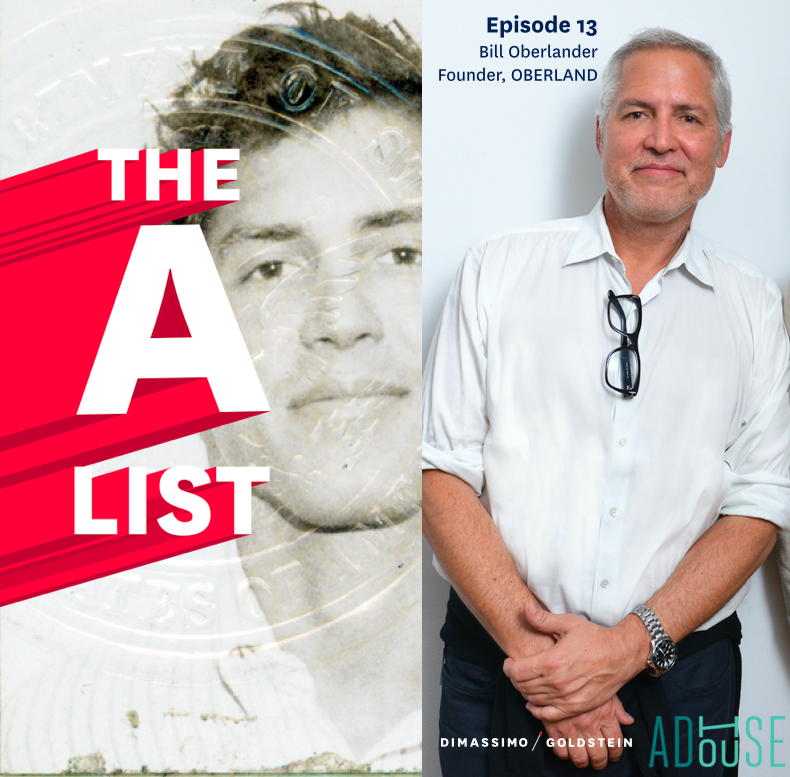By
Mark DiMassimo | 08/17/2017 | in
The following post is an excerpt from Digital@Speed, authored by digital marketing guru Mark DiMassimo. Visit the official website here to download your free copy today.

Too many people are failing for hunting with a fishing pole.
Let’s say you’ve gotten this far in life on your fishing skills. But the waters are all fished out and the hunters are bringing home the big dinners now. Do you get advice, read all you can about hunting, find a guide or partner to lead you? Or do you just head off into the woods with your fishing pole and tackle?
Of course not. If you are with me to this point, you of course recognize this as absurd. And yet we all do this in some part of our lives, very likely in more than one. The fact is it’s so hard to keep track of the things we know that it’s impossible to even learn the names and categories of all the things we don’t know.
And knowing is just the first step. Accepting is another thing entirely. Knowing what to do about it is a third. If the thing you don’t know is a fatal flaw such as not knowing how to judge character and quality in people, then that’s going to dog you no matter what you do. You are going to need to address that directly, as quickly and as energetically as you can. You’re going to need to get the best help you can with that, because it will be like driving with the emergency brake on- it not only slows you down, it also stinks.
Work as hard as you can on getting to know what you don’t know. If you don’t know marketing, find someone to trust. Of course you need to learn and check with other advisors, but you want to try to develop trust and a good relationship with a key advisor. Look for proof, for measures of success that make sense, but delegate real responsibility and authority.
Create a real partnership and let it flower.
By
James Nieman | 08/17/2017 | in

In the latest episode of “The A-List” podcast, host and DiMassimo Goldstein CCO Tom Christmann is joined by the hilarious Roger Camp, Partner and Chief Creative Officer of San Francisco based Camp+King. During his 20+ years in advertising, Camp has been awarded every major creative award under the sun and has worked on some of the world’s biggest brands, such as Amazon, Nike, Virgin Atlantic, Coca-Cola, and Adidas. He’s about as A-list as they come.
Tune in to hear all about how Camp likes to get naked with his dad, the three-fail rule, how to make brands and businesses conversation worthy, and much much more. Full episode and show notes below!
Show Notes:
- [0:00 – 1:36] Intro
- [1:37 – 7:08] Roger talks about growing up in Jersey, getting naked with his salt of the earth father, and his childhood aspirations of becoming an artist
- [7:09 – 10:24] Attending SVA and falling in love with advertising
- [10:25 – 19:30] The importance of being able to make mistakes, Roger’s first ads, and working on Comedy Central
- [19:31 – 22:48] Heroes in the industry, getting fired, and the power of remaining optimistic
- [22:49 – 27:53] Roger discusses his short stint at BBDO and finally getting a gig at Cliff Freeman & Partners
- [27:54 – 31:28] The culture at Camp + King and the importance of working with people you like
- [31:29 – 35:54] The importance of a brand voice and more advice for young writers
- [35:55 – 37:44] Brand behaviors
- [37:45 – 41:59] Cliff Freeman’s “Cliffisms”
- [42:00 – 49:00] Working at Wieden+Kennedy, the actors strike, and the value of a planner
- [49:01 – 51:49] The Camp+King positioning and being conversation worthy
- [51:50 – 52:41] Outro
“The A-List” is a podcast produced by DiMassimo Goldstein, recorded at the Gramercy Post, and sponsored by the Adhouse Advertising School, New York’s newest, smallest, and hippest ad school. You can subscribe and rate the show on iTunes or listen along on SoundCloud. For updates on upcoming episodes and guests, be sure to like the A-List Podcast on Facebook and follow host Tom Christmann on Twitter.
By
Mark DiMassimo | 08/16/2017 | in
The following post is an excerpt from Digital@Speed, authored by digital marketing guru Mark DiMassimo. Visit the official website here to download your free copy today.

Ernest Hemingway is said to have created the shortest short story ever. Over lunch at the Algonquin Round Table in New York City, Hemingway bey his writer friends he could write a compelling tale in only six words. His lunch mates happily bet $10 each that he couldn’t do it. Hemingway scribbled six words on a napkin, then passed it around. Each writer read the napkin and immediately conceded Hemingway had won. The six words: “For sale. Baby shoes. Never worn.”
At DiMassimo Goldstein, we could say, “We’ll get you to a better place and we’ll get you there quicker.” But we say, “Higher standards. Shorter runways.”
So let’s not ever make each other guess which part of a brief is the important part. Let’s just include the important part. Let’s make sure our briefs are simple, compelling and crystal clear. Nothing in an agency is more sacred. – From the DIGO Standard .
I like to think that it’s called a brief for a reason. This is not about “minimalism” or some fetish for curtness. Before a brief can be a tool for getting the right creative work or media thinking out of a team, a brief is a tool for getting thoughts focused. Focused thinking is elegant. An elegant solution is everything that is necessary to solve a problem, and not one thing more. Looking at it from the other directions, you want it as simple as possible, but no simpler.
Think problem/solution. Question/answer. Stimulus/response. Just as listening well is essential to communicating effectively, defining the problem is essential to creating a solution.
By
James Nieman | 08/04/2017 | in

Brands and businesses are stubborn.
And why wouldn’t they be? They’re run by humans, and we’re the most stubborn species of all.
We don’t just hate change, we loathe it. We run the other way and resist it at all costs.
And businesses, like humans, are also creatures of habit. They love their routines, and when successful, they love them even more. In these routines, they’re safe – so they repeat them until they become automatic.
But this behavior is dangerous, and for businesses, it’s downright deadly.
By nature, CEO’s and CMO’s fixate on control, and change is the antithesis of control. It brings upon the very thing they work so hard to avoid: uncertainty. It can mean abandoning the strategies and practices that got them where they are today – and worst of all, it almost always means more work.
But the world is changing, and to be successful, your brand and business must change with it.
It’s how IBM, a company that was selling cheese slicers 106 years ago is now leading the conversation on Artificial Intelligence.
It’s how Marvel, a comic book company that went bankrupt in 1996, now has two of the top ten highest grossing films of all time.
It’s how our inspiring client, Weight Watchers, transformed from a weight loss brand to a vibrant community of empowered members to achieve seven straight seasons of growth.
And it’s how The New York Times, a publication founded in 1851, is topping the podcast charts with its sponsored program, The Daily.
You may call these companies game changers, and that’s fine – but the truth is they didn’t change the game, they just reacted more quickly than their competitors when the game itself changed.
So how’d they do it?
They took actions. Brave and courageous actions in the face of discomfort. They opened doors their competitors wouldn’t – and most of those competitors are still locked out.
They hired planners – planners who became obsessed with the future. They examined trends and thought flexibly. They kept their eye on the bigger picture, when everyone else was focused on the smaller portraits of the present.
The unknown isn’t safe, but it’s where you need to play if you want to win.
So think ahead. Imagine possibilities that seem decades and decades away. The way you think consumers make decisions today will be different than the way they make decisions tomorrow.
Become a leading brand of 2020.
Take action. Define the alternative future you exist to prevent.
By
Mark DiMassimo | 07/26/2017 | in
The following post is an excerpt from Digital@Speed, authored by digital marketing guru Mark DiMassimo. Visit the official website here to download your free copy today.

What do you believe about people? What do you think they work for? What motivates them?
You have a people theory whether you know it or not. No one could long survive in a society without some operating theory of what will work in interactions with other people.
When I was in college, I interned at a psychiatric hospital on the acute care ward. People came in at their absolute craziest. Sometimes they were truly stark raving mad. But for the most part, these people were successful more than half of the time in navigating interactions with other people.
On the other hand, even the most successful don’t have perfect social records. They misjudge people or themselves. They make mistakes.
They too have people in theories in action.
A leader should be as conscious of his or her people theory as possible. Look for your patterns. Write stuff down. Question your assumptions. It’s not easy, but it’s less painful than expensive mistakes.
By
Team DIGO | 07/26/2017 | in

This week on “The A-List” podcast, host and DiMassimo Goldstein CCO Tom Christmann chats with his long-time friend and former boss, Bill Oberlander, the executive creative director at OBERLAND. Bill has worked as a creative executive at many top agencies, including JWT New York, Cossette New York, McCann Erickson, Ogilvy & Mather, and Kirshenbaum Bond + Partners. Working on such global accounts as Microsoft, Intel, Snapple, Target, Coach, Bloomberg, and Nikon. Bill has helped reinvent brands with his iconic and transformational campaigns.
Tune in as Bill and Tom discuss what it takes to break into advertising in New York City, why philanthropy is important for both brands and people, and how today’s creatives can build a portfolio that gives Bill goosebumps.
Show Notes:
- [0:00 – 2:05] Intro
- [2:06 – 5:17] Bill and Tom discuss working together at Kirshenbaum
- [5:18 – 8:23] Bill’s childhood in South Amboy, NJ, attending an all-boys Catholic high school, and dreaming of a future in the arts
- [8:24 – 13:25] Studying business communications and visual communications at the University of Delaware, and falling in love with advertising
- [13:26 – 15:17] Moving to NYC, couch surfing, and landing his first advertising gig
- [15:18 – 19:49] Becoming an art director at McCaffrey & McCall
- [19:50 – 30:57] Learning the ropes at McCann, working on the Coca-Cola account, and scheduling his first shoot without client approval
- [30:58 – 35:08] Being recruited by Richard Kirshenbaum as his art director, and faking it until he made it
- [35:09 – 41:13] Bill’s first big campaign at Kirshenbaum: El Presidente Spiced Brandy
- [41:14 – 48:49] Reinventing Snapple with the famous “Snapple Lady” campaign
- [48:50 – 56:49] Working at Robin Hood Foundation, the importance of building brands with purpose, and launching Oberland
- [56:50 – 61:16] What Bill looks for when reviewing portfolios today
- [61:17 – 62:44] Outro
“The A-List” is a podcast produced by DiMassimo Goldstein, recorded at the Gramercy Post, and sponsored by the Adhouse Advertising School, New York’s newest, smallest, and hippest ad school. You can subscribe and rate the show on iTunes or listen along on SoundCloud. For updates on upcoming episodes and guests, be sure to like the A-List Podcast on Facebook and follow host Tom Christmann on Twitter.
By
Mark DiMassimo | 07/24/2017 | in
The following post is an excerpt from Digital@Speed, authored by digital marketing guru Mark DiMassimo.

I love game changers. They drive the world forward. They are the natural force in national selection. They are the good guys of business. And I want them to win. I want them to end up on top.
But, often they don’t. Because game changing and game winning don’t automatically go together. Think about it this way: Innovation creates a window of opportunity. The window opens with the introduction of the change. It closes when the new way is copied, tweaked, improved and deployed by the competition.
What the game changer does between the opening and the closing of that window is everything. If you move quickly to own the change, to own it in the marketplace, to own it in the minds of your target audience, then you make it much more difficult for your much larger and richer competitors to co-opt that innovation.
Between the opening and closing of the window, there is DIGO.
By
Mark DiMassimo | 07/14/2017 | in

We marketers spend so much time on our marketing, we can be forgiven for thinking that it’s the first and last word about the brand.
Perhaps there was a time when this was more or less true. Not today.
Today, the conversation about brands, services and products is never more than a couple of clicks away. People have more tools than ever to find out what other people really think about the things we sell. Advertising is a smaller and smaller part of the conversation.
That’s why an integrated growth plan must start with the behaviors and beliefs of the audience. It needs to embrace the entire brand experience. The customer journey becomes the road map. By prioritizing the touch points with the greatest leverage, real results improvement can often be achieved in short order.
So, what about the 57%? That’s the part of the buying process that a prospect typically engages in before they talk to someone from the company. The other 43% is important, but the whole 100% is where the winners play.










